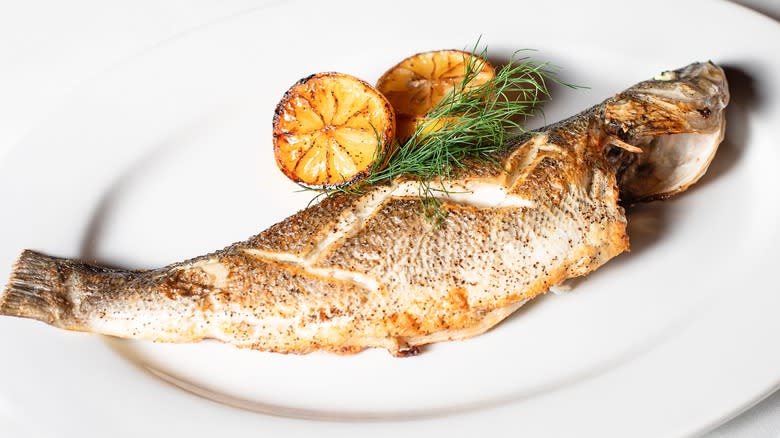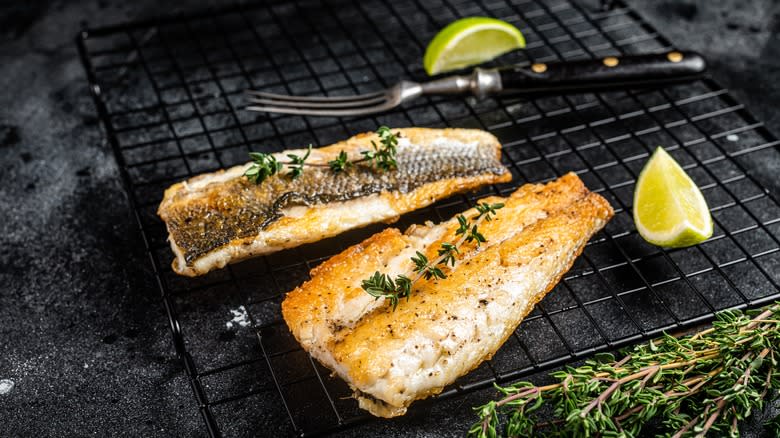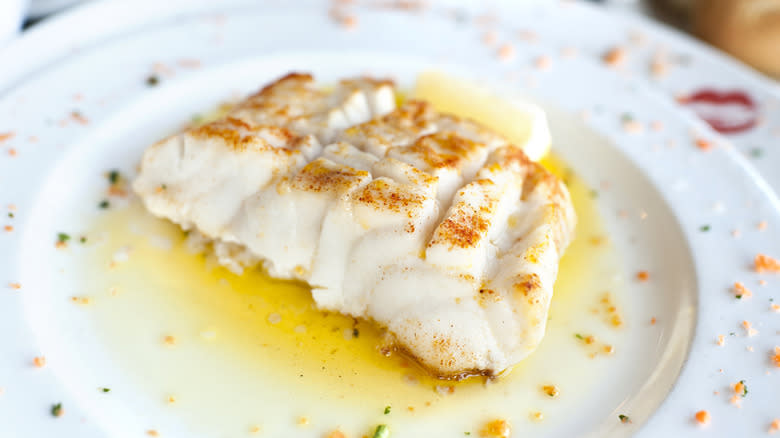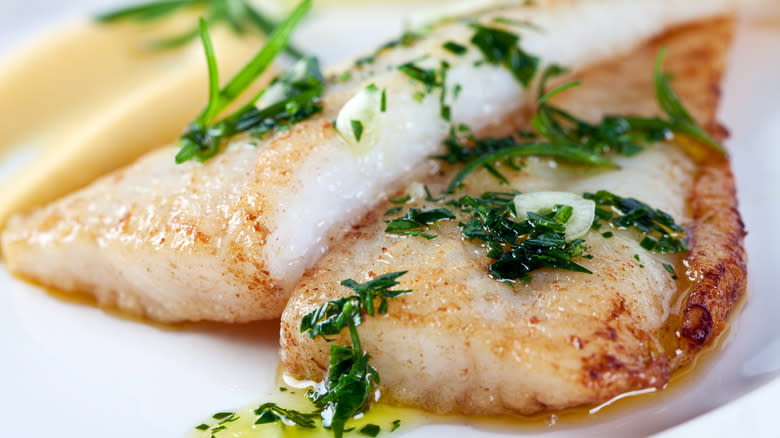Is There A Difference Between Branzino And Sea Bass?

Especially for diners who don't live on the coast, recognizing fish types can be confusing. Sure, there's the distinct orange flesh of salmon or the meat-like texture of tuna. Yet, dive into the world of white-fleshed fish, and the options seem endless.
In part, such confusion is due to the regional variations, as well as inconsistent naming between species. Take bass, for example -- the name can refer to everything from the popular recreationally caught freshwater fish, to varying oceanic species around the world.
And especially when it comes to identifying the varying sea bass kinds, it's helpful to be pedantic. Similarly named fish can have distinct culinary qualities, while completely different names can refer to the same species. This is the case with branzino and sea bass. Although referred to differently, the two fish are actually of the same family. So why do branzino and sea bass have different names, and do they have distinctions? Let's dive into the details.
Read more: 15 Different Ways To Cook Fish
What Is Branzino?

Branzino refers to a white-fleshed fish hailing from the Mediterranean. The name is of Italian origin, where it's especially popular, with many domestic renditions. Boosted by Italian cuisine's appeal, such nomenclature has made the name more famed abroad. However, it's also known by various other names, such as European sea bass, capemouth, and loup de mer in France. The species is caught in a broad area ranging from the Nordics to the Black Sea and all the way south to the Atlantic coast of West Africa.
Its popularity is evinced by its taste; branzino has a delicious, sweet flavor with delicate flesh. It's absent of any pungent, bold notes, or other off-putting flavors, making it an esteemed choice for varying applications. It easily retains its consistency, avoiding mushiness, yet flakes once cooked. Plus, its skin is edible, too, creating a delicious crust when heated.
Additionally, the fish is a manageable size; most exemplars are around two pounds, making it versatile in both home and restaurant settings. It can be grilled and roasted without filleting, or steamed, or pan-seared, among other techniques. As a result, the consumption of branzino has spread abroad and has become especially popular in Latin American and Asian cuisines.
What Is Sea Bass?

Sea bass refers to a greater assortment of fish, all varying species of bass that live in oceanic waters. Branzino is a subtype of the family, encompassing the fish types that populate east Atlantic waters. However, the name also refers to fish like striped bass, which inhabits the North American Atlantic coast, as well as endemic Asian barramundi, which have similar qualities.
Several fish are referred to as sea bass but are from a completely different fish family and have different culinary qualities. For example, the Chilean sea bass is actually a Patagonian toothfish, while black sea bass -- popular in North America -- is a type of grouper.
Sea bass share similar physical characteristics: They're known for their long body yet large head, as well as thick-scaled skin. All varieties have a palatable white flesh, making them ideal for applications such as whole-roasting, pan-searing, poaching, and more.
Branzino's Flavor Difference From Other Sea Bass Types

Fish referred to as sea bass have similar culinary qualities, with a tasty and delicate white flesh. However, there are a few small differences between branzino and other types. Notably, barramundi has a higher fat content and slightly less pronounced sweetness. Its flesh is slightly less smooth, and branzino is just a tad more flavorful, noted for its more pronounced nutty notes. On the other hand, striped bass run a bit saltier, although the texture of their flesh is similar. It also has a "blood line" or "blood stripe" of darker flesh which, if left intact, yields a bolder flavor.
Otherwise, branzino and other sea bass types are very similar. They can easily be substituted between dishes, and flavor pairings will function regardless of the type. No matter which sea bass variety is available on hand, it's worthy of a delicious -- and healthy -- meal. Sea bass's delicate white flesh showcases the delectable qualities of ocean-dwelling fish.
Read the original article on Tasting Table.

